What if there’s an emergency on the A Line? from Stapleton Front Porch on Vimeo.
![]()
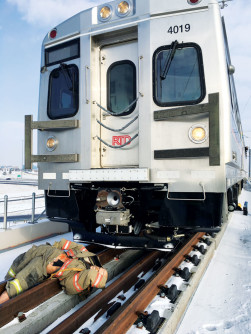
Ryan Fields AFR, Aurora Fire Rescue
The January 9 incident was staged on the elevated portion of the University of Colorado A Line, the mile-long bridge that takes the train up and over I-70 in Aurora. In front of the lead car, a sandbag dummy sprawled across the tracks, looking for all the world like the victim of a real collision. Below the rail line bridge, units from the Aurora fire and police departments assembled along with their Denver Fire Department counterparts and an Adams County representative.
Exercise director John Plante, a Denver Transit Partners (DTP) consultant, described the scenario and addressed the roles to be played by the “victims,” the responders, central operations, the exercise “controllers” and the exercise evaluators. With the train stopped, the suicide dummy placed on the tracks, and the train cars disconnected from the overhead power line, the first responders quickly mobilized and went about their duties.
The entire exercise took about three hours, much longer than it would in real life. The extra time allowed firefighters to practice alternative ways of accessing the train cars, both via exterior stairs and by means of fire department ladder trucks.
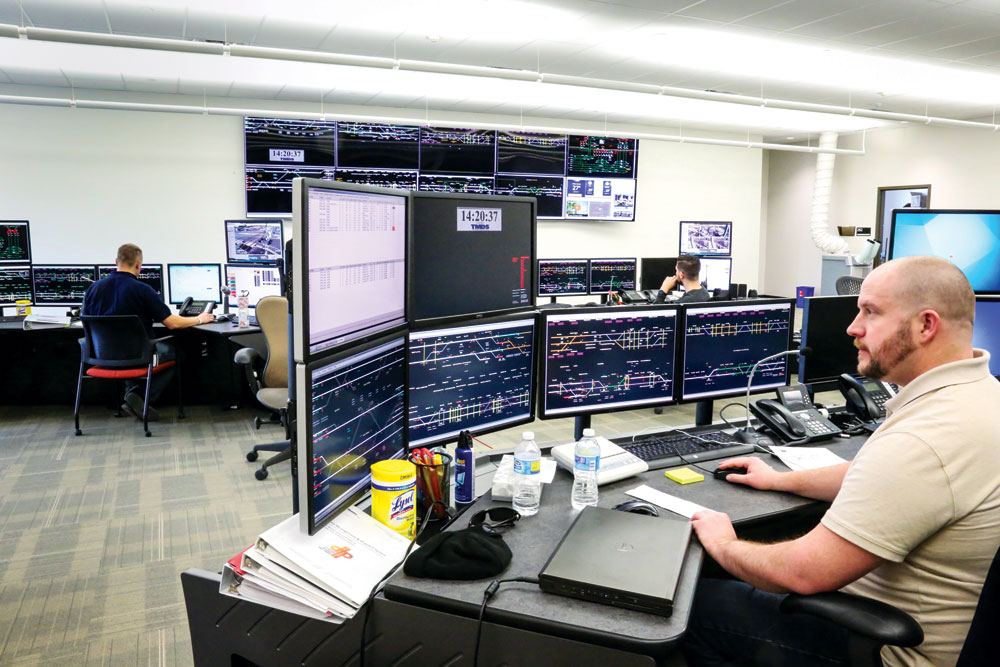
“This is an exercise. OCC (Operations Control Center), we have a problem: train-pedestrian collision on the A Line bridge over I-70.” This message from the train operator begins the first emergency preparedness drill for the University of Colorado A Line, the commuter rail connecting downtown to DIA. The operator stops the train, notifies OCC of the incident, and is instructed to lower the “pantograph” connecting the train to the overhead power line. The DTP personnel in OCC then begin notifying first responders who quickly access the stopped train, triage the “victims” and escort them to safety via stairs or ladder truck.
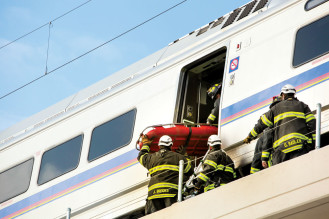 A variation from real life was actually written into the exercise script: passenger injuries resulting from the train lurching in a sudden stop. DTP Executive Project Director Aaron Epstein stated that the number of injuries in this scenario would be highly unlikely but was added to the drill to get the most value out of the exercise. Commuter rail can operate at speeds up to 79 miles per hour—and they can require more than a half-mile to stop.
A variation from real life was actually written into the exercise script: passenger injuries resulting from the train lurching in a sudden stop. DTP Executive Project Director Aaron Epstein stated that the number of injuries in this scenario would be highly unlikely but was added to the drill to get the most value out of the exercise. Commuter rail can operate at speeds up to 79 miles per hour—and they can require more than a half-mile to stop.
Much of the exercise time was consumed in safely evacuating two “critically injured victims,” three “injured” passengers and 21 with “minor injuries” (corresponding to the “red,” “yellow” and “green” triage categories). Despite the height and the cramped space, the responders’ work at an elevated transit facility appeared almost routine.
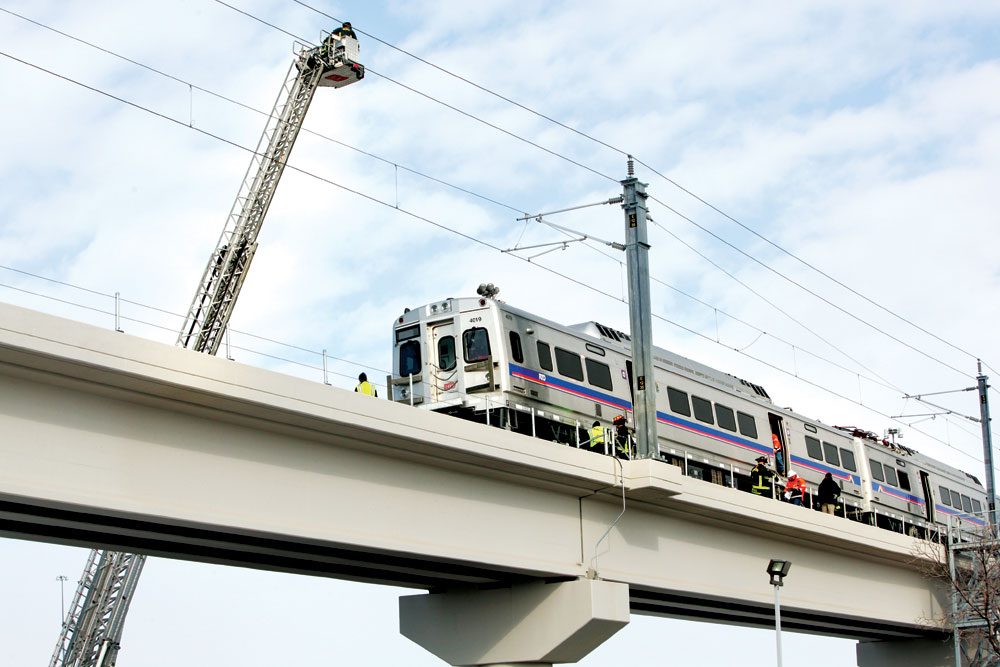
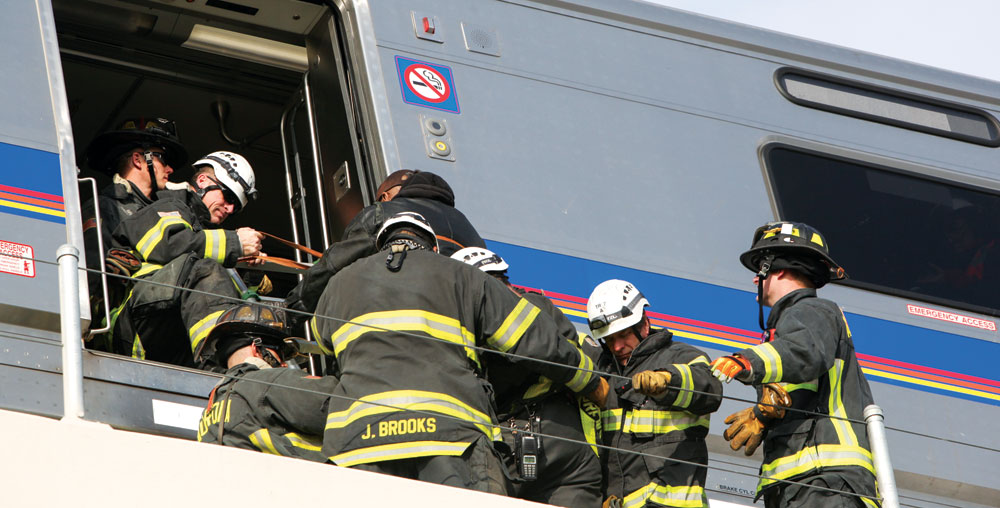
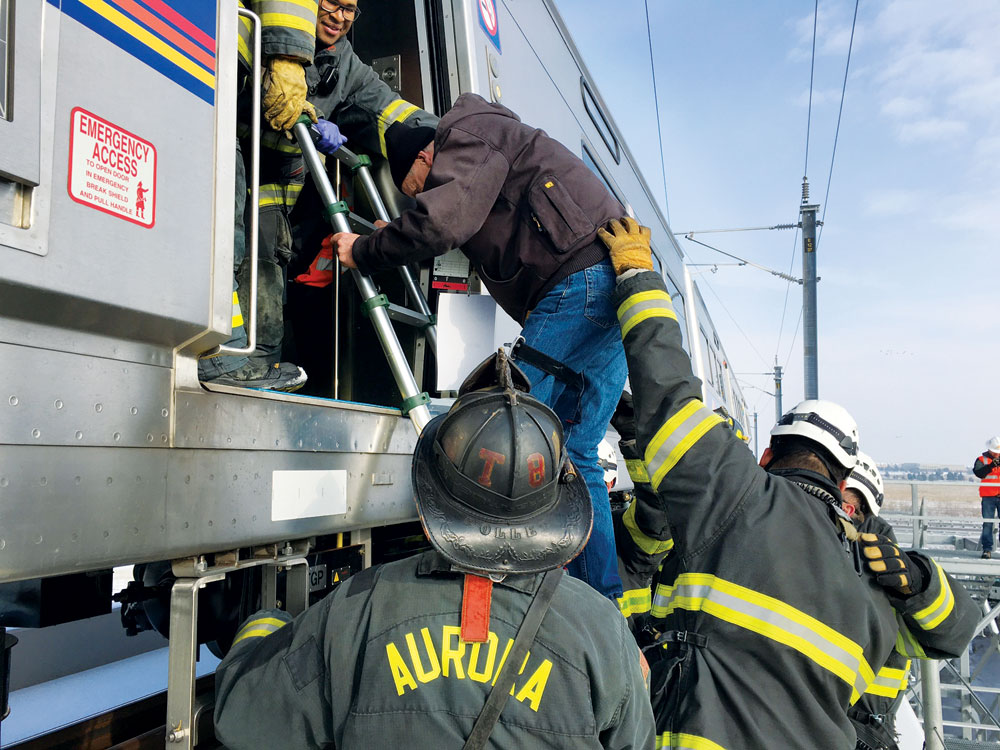
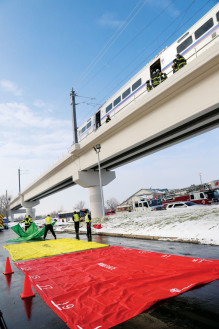
Firefighters from Aurora and Denver categorize “victims” by injury severity: critical injuries requiring immediate attention (red), moderate injuries (yellow), and minor injuries (green). Victims wore placards such as “Passenger OK,” “Unconscious and Bleeding,” and “Conscious and Confused.” The exercise moved quickly from first notification to responder mobilization, then to on-scene aid to victims. A final phase involved Aurora Police Department investigation of the collision that precipitated the event. Once concluded, the overhead catenary lines were re-energized and train service was restored as soon as possible—just as it would be in a real situation.
Such drills are a requirement of the federal government and apply to the A Line because of federal funding provided for the project. The drill was organized by Denver Transit Operators (DTO), a part of the Denver Transit Partners team that is building the A Line. DTP will operate and maintain the A Line for 29 years under its agreement with the Regional Transportation District (RTD).
Epstein said DTP will perform such exercises throughout the 29 years despite the fact that the federal government only requires such full-scale emergency simulations every three years.
RTD and DTP spokespersons said the exercise went well. DTP will prepare an “After Action Report” consisting of an improvement plan based on the strengths and weaknesses revealed by the drill. All of this is part of the Federal Railway Administration (FRA) certification process now underway. The line is in the “Operator Training and Vehicle Burn-in” phase, which continues until approximately March 1. It is followed by the “Performance Demonstration” phase during which the system will operate as if it were open for passenger revenue service.
This is the first in a series of articles that the Front Porch will produce between now and the opening of rail service on the University of Colorado A Line on April 22. The series will address safety and operational issues including the “Positive Train Control” system being used for the first time on a new passenger rail system. Other topics will include quiet zones, fares, schedules, bus service changes, bicycle facilities, and traffic movement at the stations.




0 Comments